Kanazawa Castle is a magnificent fortress and a symbol of the prosperous Kaga Domain, once ruled by the powerful Maeda clan for nearly 300 years—from the late Sengoku period through the Meiji Restoration. Along with Kenrokuen Garden, it stands as one of Kanazawa’s most iconic attractions. Its gleaming white plaster walls and lead-tiled roofs have earned it the nickname “The White Castle.”
- Historical Overview of Kanazawa Castle
- Access
- Quick Guide: Top 7 Must-See Spots
- Complete Guide: Explore Kanazawa Castle Through Six Distinct Areas
- Rear Approach / Ishikawa-mon Area (Karame-te)
- Sannomaru → Main Entrance (Kahoku-mon, Hashizume-mon & Plaza)
- Kita-no-maru & West Ninomaru (Dobashi Gate Ruins, Kitte-mon, Former 6th Brigade HQ)
- Ninomaru Core (Palace Site, Gokuraku Bridge, Long Storehouses)
- Honmaru & Higashi-no-maru (Honmaru Grounds, Turret Sites, Tsurumaru Warehouse)
- Western Bailey & Outer Enclosure
Historical Overview of Kanazawa Castle
The origins of Kanazawa Castle trace back to the 1480s during Japan’s Warring States period, when the followers of Honganji Temple built a fortified religious complex known as Kanazawa Mido. The city flourished as a center of the Kaga Ikko-ikki uprising, a self-governed religious community. However, in 1580, it fell to Sakuma Morimasa, a general serving under Oda Nobunaga. Three years later, in 1583, Maeda Toshiie took control of the castle and began ruling over the provinces of Kaga, Noto, and Etchu.
Under the Maeda clan, Kanazawa Castle evolved into both a political center and a family residence. Extensive improvements were made over time—moats, stone walls, and long storehouses were expanded, and by the early Edo period, the Ninomaru, Honmaru, and Gyokusen’inmaru areas were completed. At its height, the castle complex covered roughly 250,000 square meters and boasted over 30 towers and gates.
After the Meiji Restoration, the castle grounds were repurposed for military use, housing the Kanazawa Garrison and later the headquarters of the 6th Brigade of the Imperial Japanese Army. Following World War II, the site became the campus of Kanazawa University. When the university relocated in the 1990s, Ishikawa Prefecture launched an ambitious restoration project, reconstructing structures such as the Kahoku-mon Gate (2010), Hishi Yagura and Gojikken Nagaya (2001), and the Nezumitamon Bridge (2020). Today, Kanazawa Castle is open to the public as a nationally designated historic site.
Beyond its gates and turrets, the castle’s charm lies in its diverse stone masonry techniques—including the precision-cut “Kirikomi-hagi,” hexagonal “Kikko-ishi,” and the elegant “Shikishi-tanzaku-zumi.” Visitors can also enjoy the serene waterscape of Gyokusen’inmaru Garden and the enchanting nighttime illumination that highlights the castle’s architectural beauty.
Access
From JR Tokyo Station, take the Hokuriku Shinkansen to JR Kanazawa Station (approx. 2 hours). From Kanazawa Station, several buses reach the castle area in about 20 minutes. Check Google Maps or local bus schedules for the most convenient route depending on your time of visit.
Quick Guide: Top 7 Must-See Spots
Perfect for travelers short on time — this curated guide highlights the seven essential spots to experience the essence of Kanazawa Castle.
Complete Guide: Explore Kanazawa Castle Through Six Distinct Areas
Kanazawa Castle combines history, architecture, and scenic beauty, making it one of Japan’s most comprehensive and captivating castle sites. In the following sections, we’ll explore the castle grounds divided into six key areas, based on their geography and walking routes.
The classic walking route starts at the Ishikawa-mon Gate, moves through the Sannomaru, Ninomaru, and Honmaru, then exits via the Gyokusen’inmaru Garden. In the six area guides below, we highlight the best sights in the order you’ll encounter them.
Rear Approach / Ishikawa-mon Area (Karame-te)
Enter from the Kenrokuen side via the castle’s rear karame-te (back gate) approach. Don’t miss the Important Cultural Property Ishikawa-mon Gate with its masugata (box-shaped) defensive layout, and the open expanse of Sannomaru Kita Enchi (North Garden).
Sannomaru → Main Entrance (Kahoku-mon, Hashizume-mon & Plaza)
This is the castle’s front gateway. The line from Kahoku-mon to Hashizume-mon concentrates major reconstructions, giving you a vivid sense of Kanazawa Castle’s scale and defensive structure.
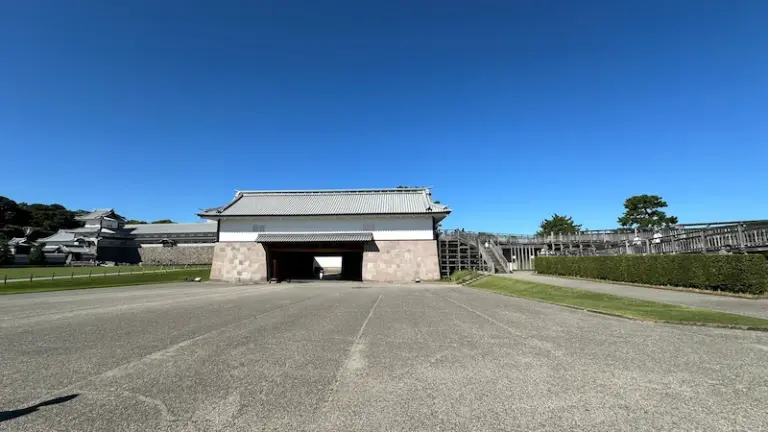
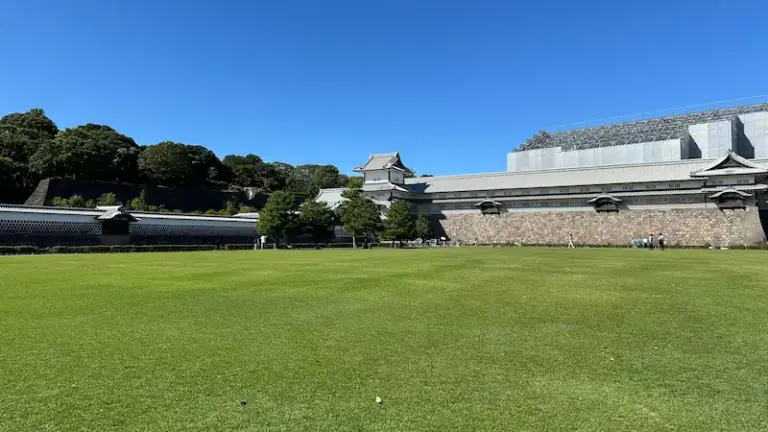
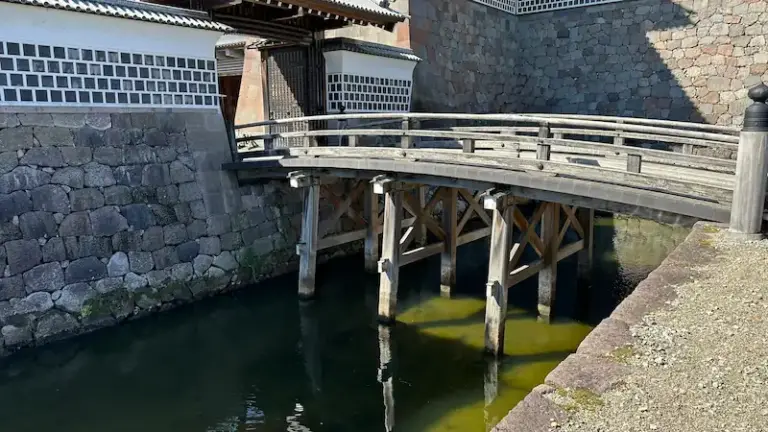
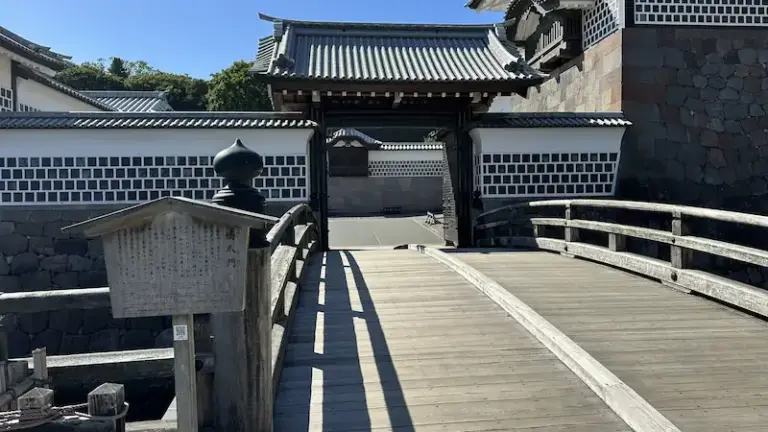
Kita-no-maru & West Ninomaru (Dobashi Gate Ruins, Kitte-mon, Former 6th Brigade HQ)
A quieter northwestern zone. Here you’ll find gate remains and military-era buildings that span the transition from Edo to Meiji, along with excellent examples of diverse stonework techniques in the ramparts.
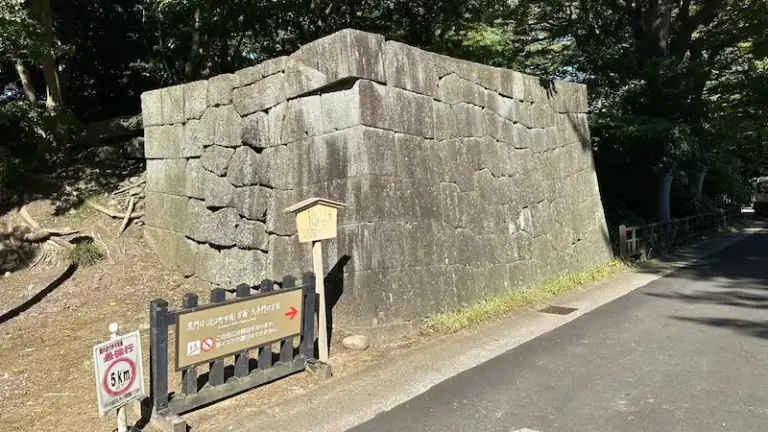
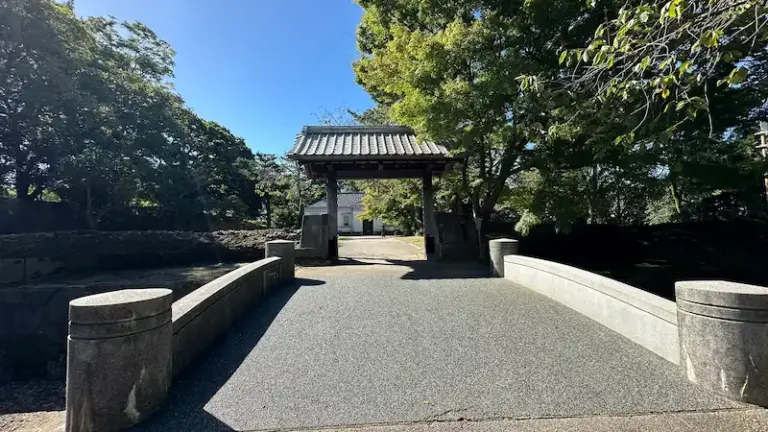
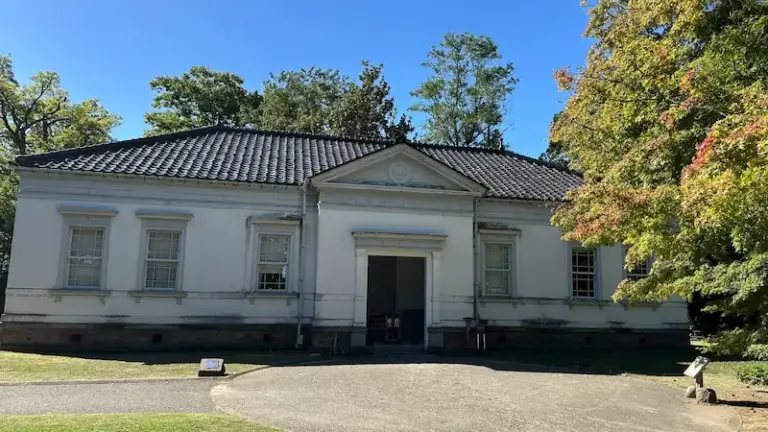
Ninomaru Core (Palace Site, Gokuraku Bridge, Long Storehouses)
The political heart where the lord’s palace once stood. This is the aesthetic center of Kanazawa Castle, home to signature reconstructions such as the Hishi Yagura, Gojikken Nagaya, Sanjikken Nagaya, and the graceful Gokuraku-bashi bridge.
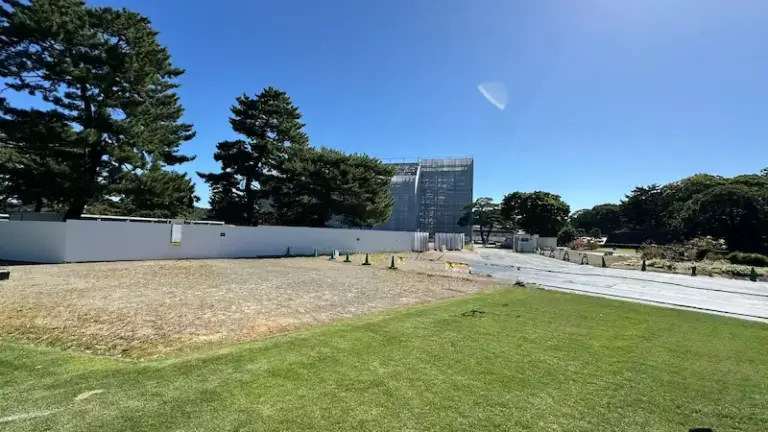
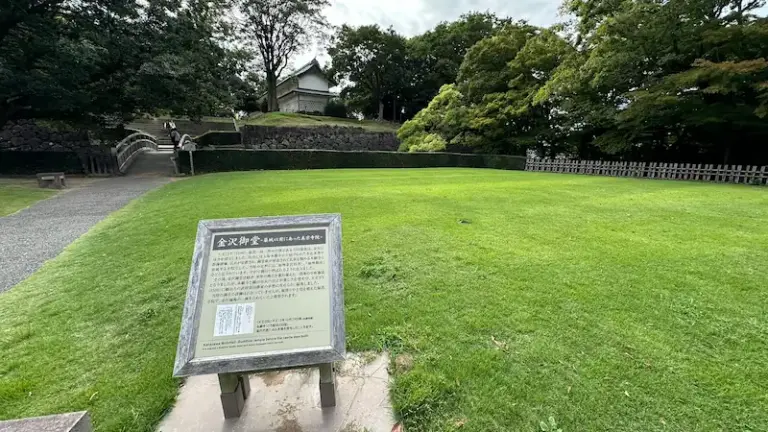
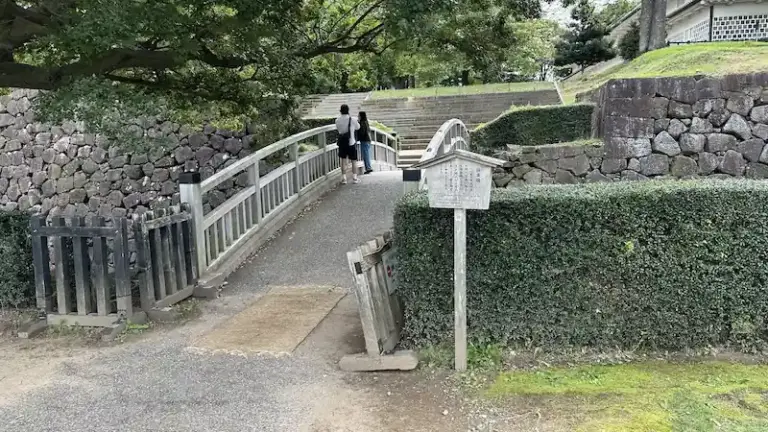
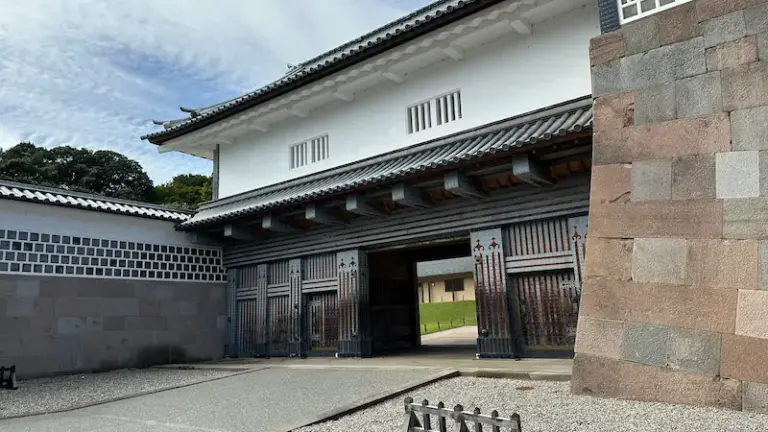
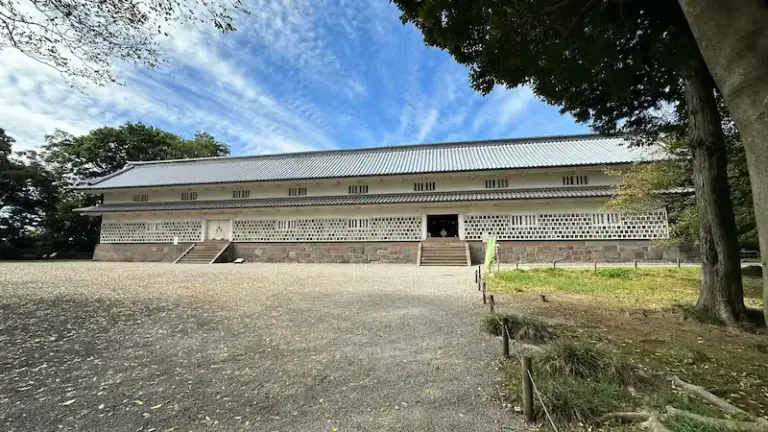
Honmaru & Higashi-no-maru (Honmaru Grounds, Turret Sites, Tsurumaru Warehouse)
The topmost defensive core of the castle. Here you’ll find the Inui, Tatsumi, and Ushitora turret sites, plus cultural properties like the Tsurumaru Warehouse. Views over the old castle town are superb.
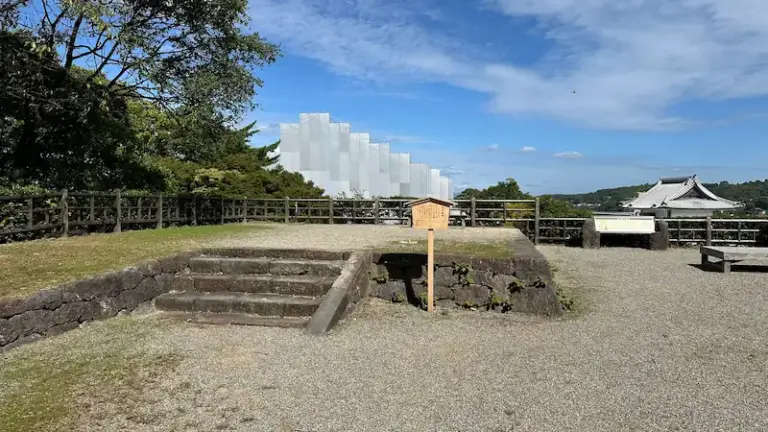
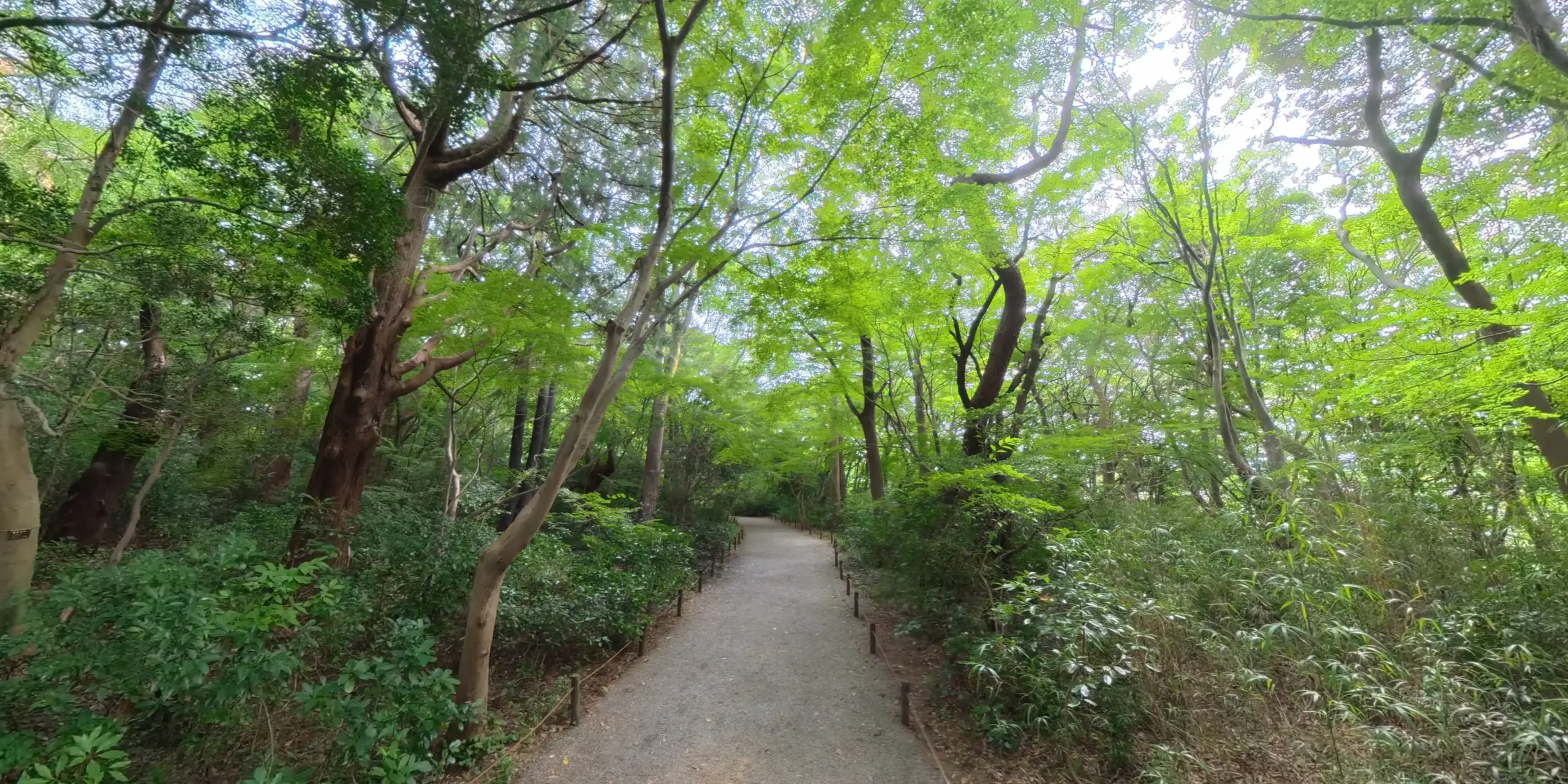
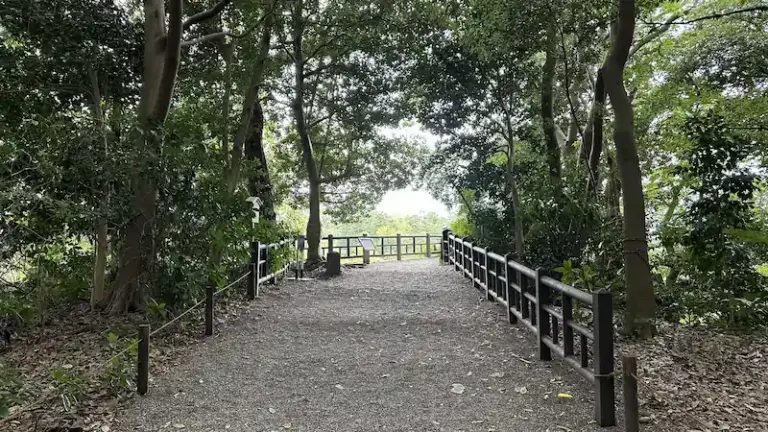
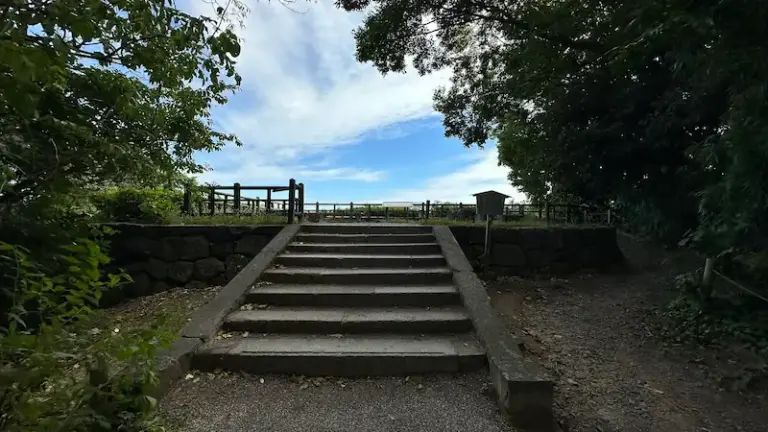
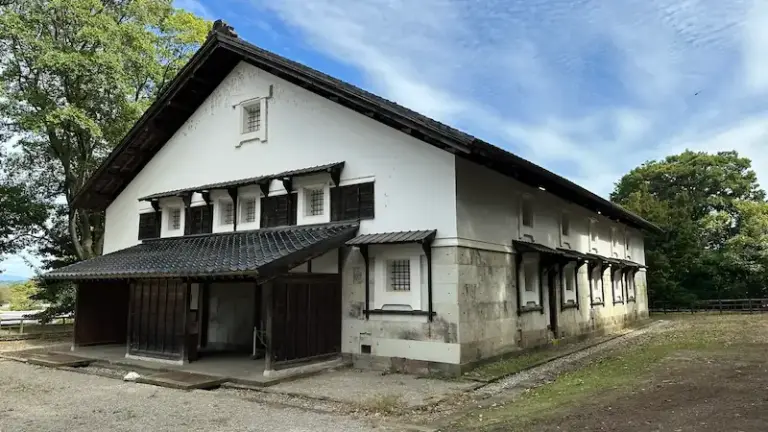
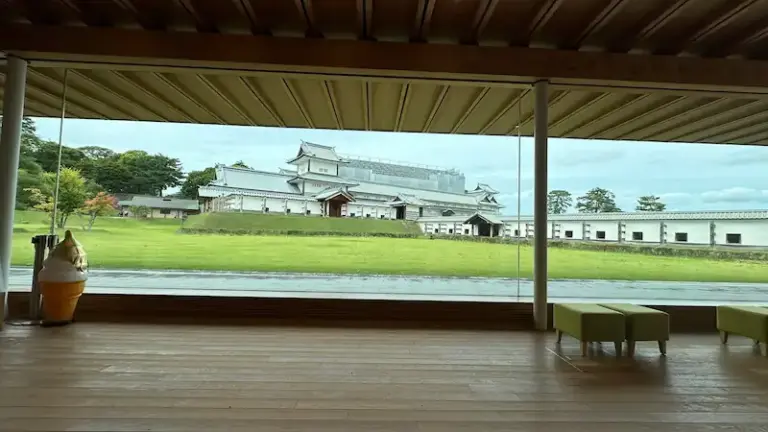
Western Bailey & Outer Enclosure
A culturally rich zone spreading west of the castle. The Gyokusen’inmaru Garden, associated with the Maeda lords, is a multi-layered pond-stroll garden where stonework and flowing water create depth and drama—the careful restoration revives its historic elegance. The adjacent Nezumita-mon Gate & Nezumita-mon Bridge re-establish a pedestrian link to the Oyama Shrine side, showcasing striking black namako (sea-cucumber) plaster walls and a timber bridge. By day, enjoy the harmony of rock and water; by night, savor the magical atmosphere of the illumination.
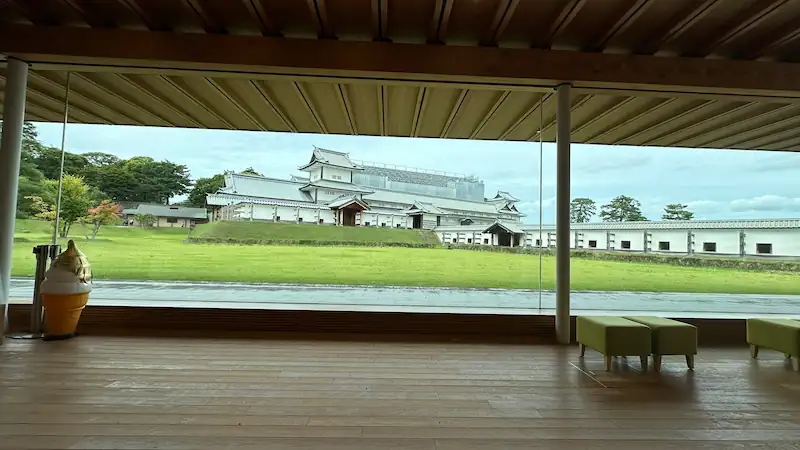

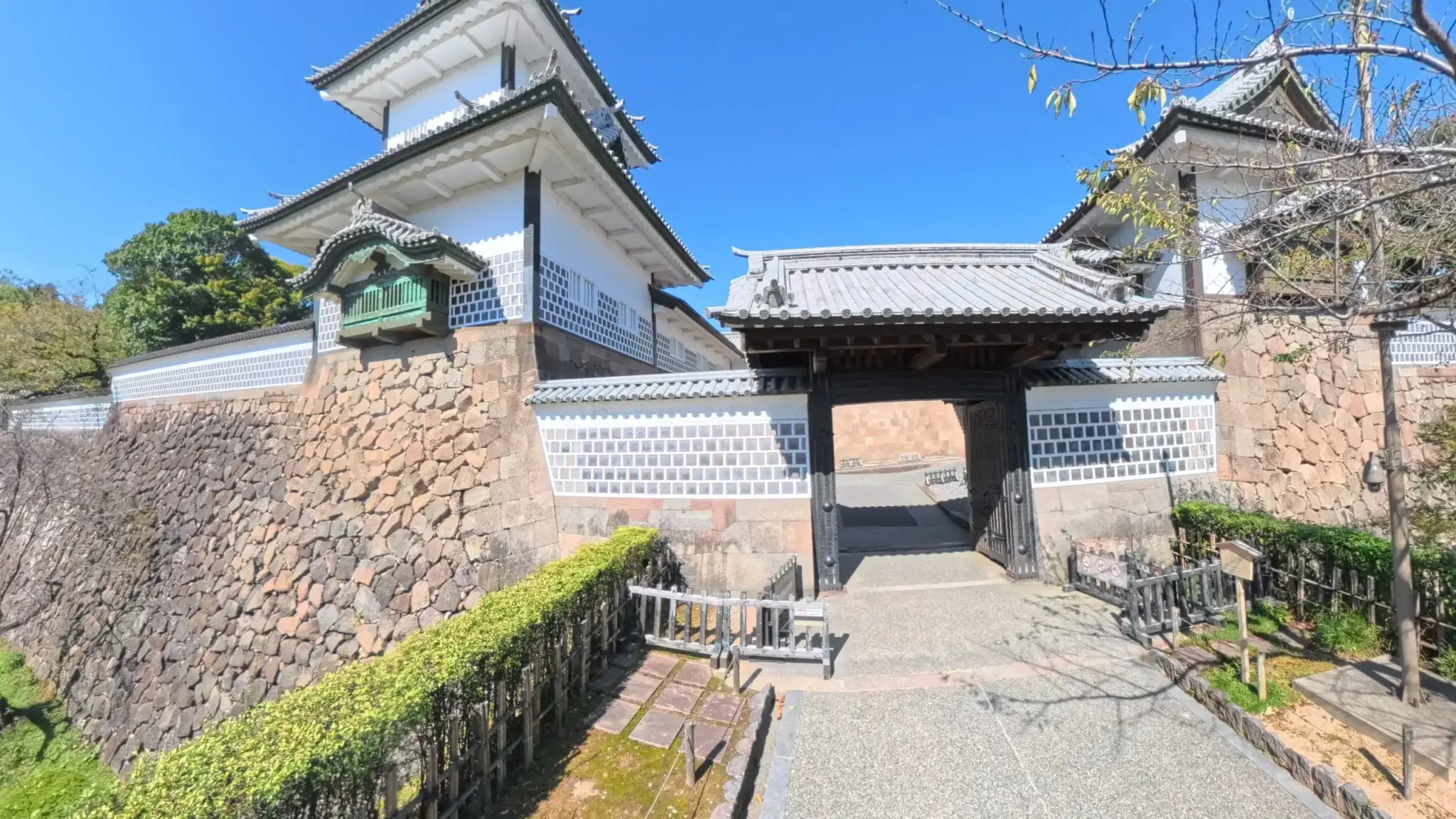
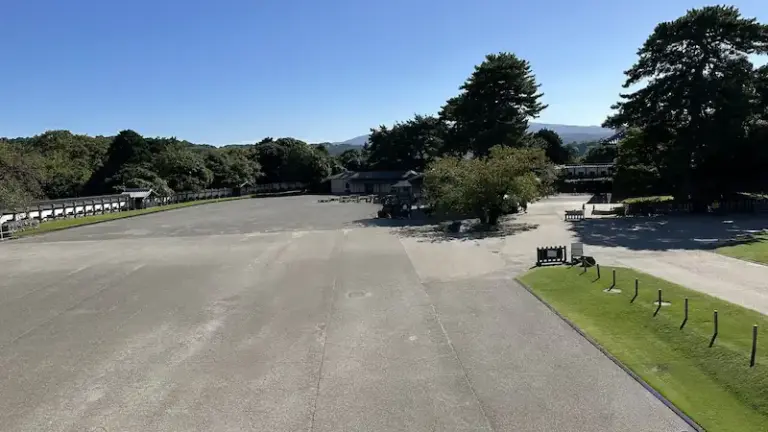
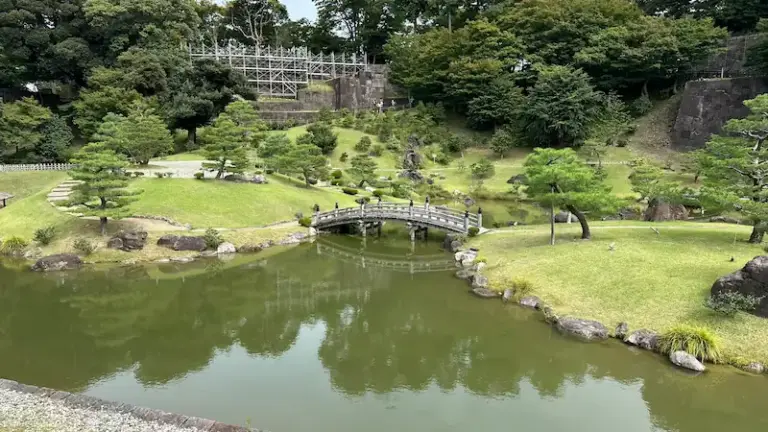
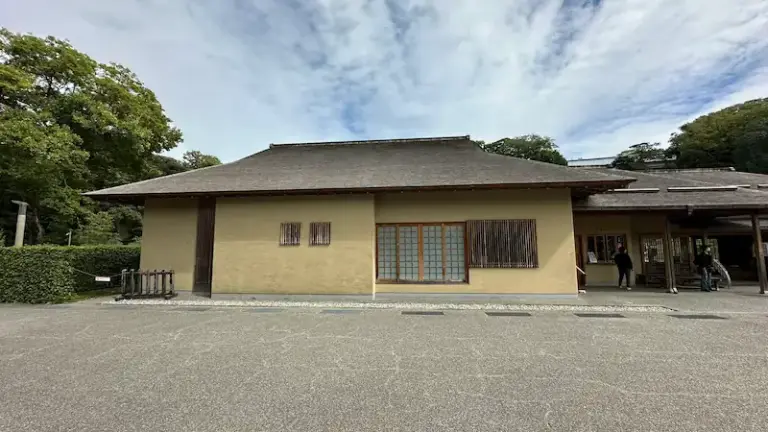
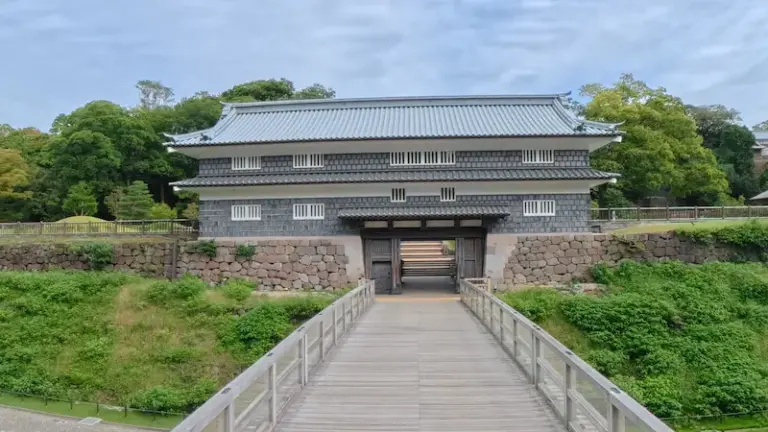
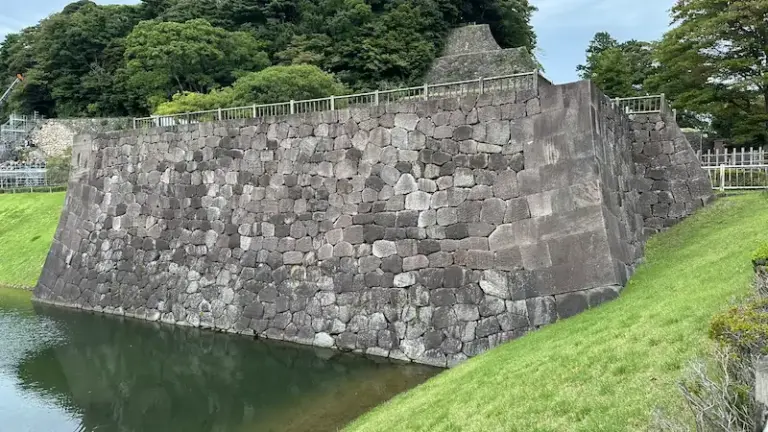
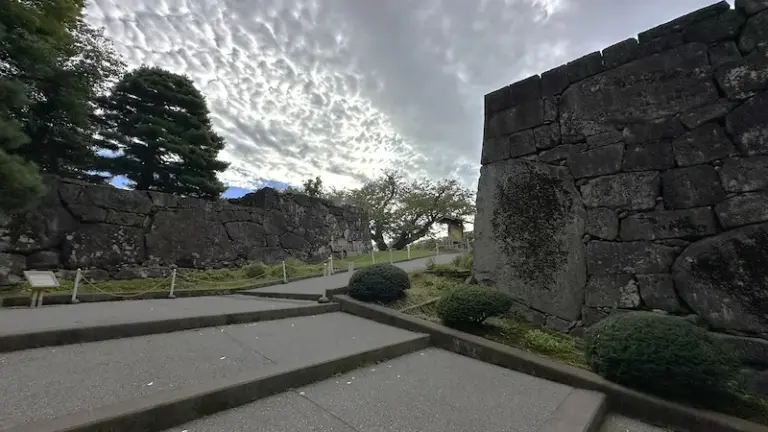
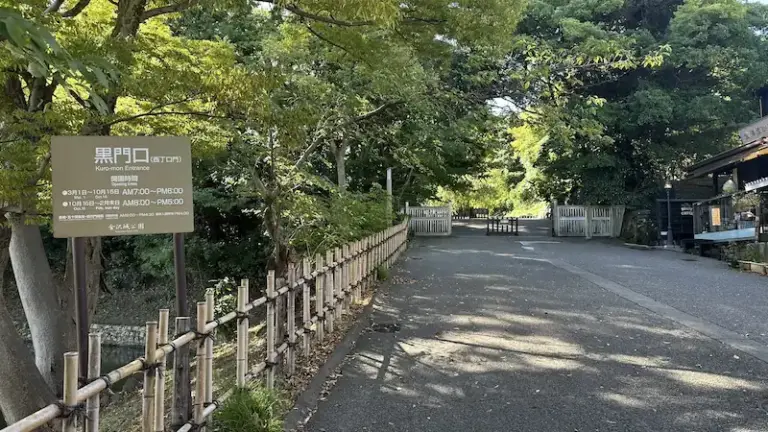
comment